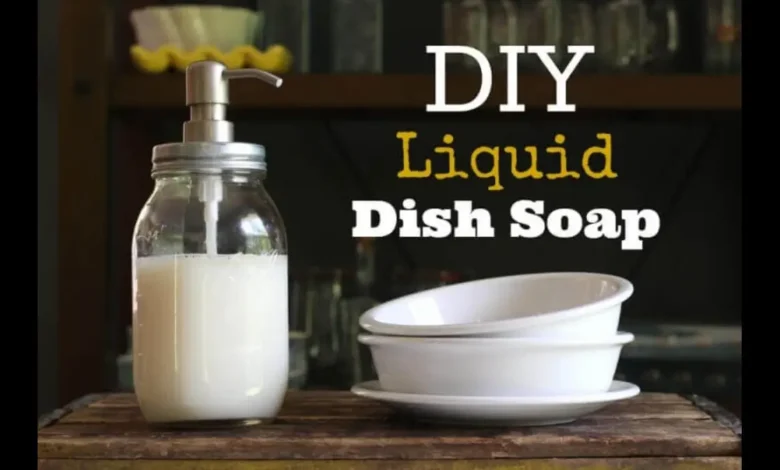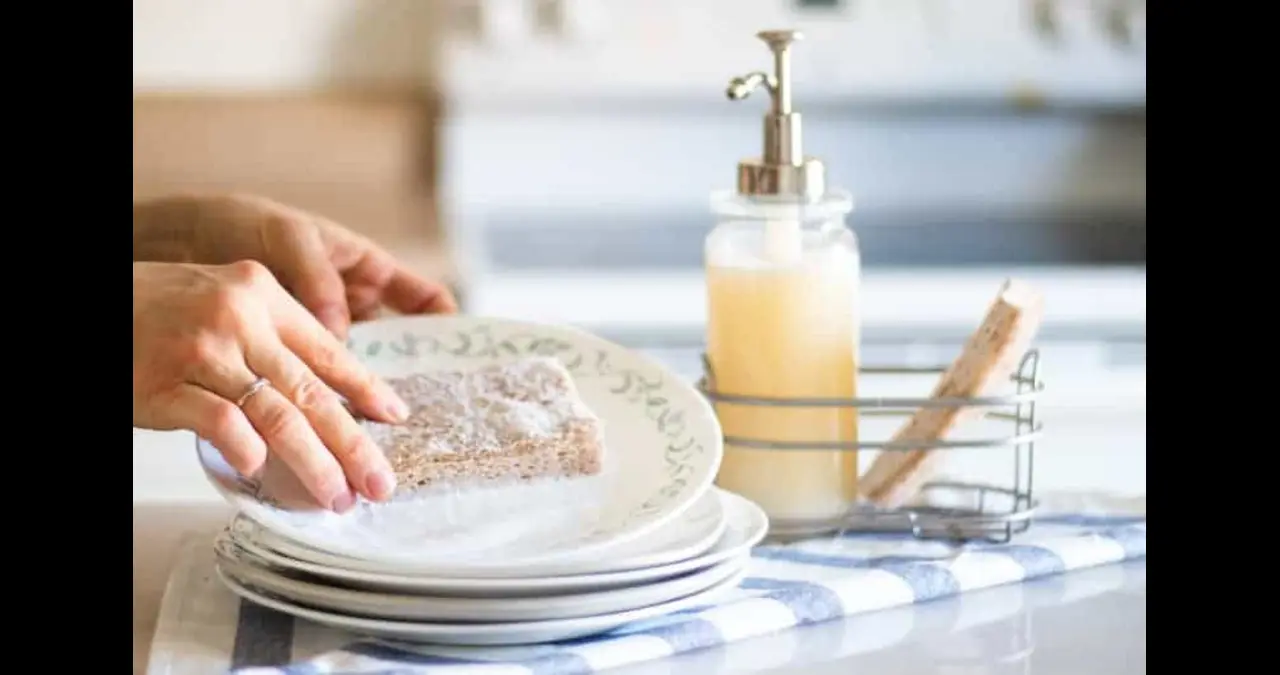Homemade Dish Soap: A Natural, Cost-Effective Way to Clean Your Dishes

Homemade Dish Soap There’s something incredibly satisfying about creating your own homemade dish soap. Not only does it give you full control over the ingredients you’re using, but it also allows you to cut down on waste, save money, and reduce the amount of harsh chemicals in your home. Whether you’re diving into the DIY world for environmental reasons or simply looking for a better, gentler clean, making homemade dish soap is a fantastic place to start.
In this comprehensive guide, we’ll break down everything you need to know about creating homemade dish soap that works. We’ll explore why it’s a great alternative to store-bought options, the best ingredients to use, and a variety of tried-and-true recipes that you can experiment with right from your kitchen. You’ll also find tips for getting the most out of your homemade soap and keeping your dishes sparkling clean.
Why Choose Homemade Dish Soap?
One of the biggest reasons people are switching to homemade dish soap is control. When you make your own, you know exactly what’s going into it. There are no long, hard-to-pronounce ingredient lists, no hidden fragrances, and definitely no untested additives. For those with sensitive skin or allergies, this can be a game-changer.
Homemade dish soap is also more environmentally friendly. Many commercial soaps come in plastic packaging, and the production process can be heavy on resources and chemicals. By making your own, you reduce your carbon footprint and minimize your household waste. Plus, it feels pretty good to know you made something useful with your own two hands.
Another perk? It’s cost-effective. Many of the ingredients used in homemade dish soap, like castile soap and baking soda, are affordable and multi-purpose. You can buy them in bulk and use them for other cleaning products too, which is great if you’re looking to overhaul your cleaning routine without breaking the bank.
What You Need to Make Homemade Dish Soap
Before you start whipping up your own batches, it’s important to gather the right ingredients. The great thing is, many of the staples for homemade dish soap can be found in most households already. Here’s what you’ll typically need:
Castile soap is the base of most homemade dish soap recipes. It’s gentle on skin, tough on grease, and completely biodegradable. You can get it unscented or opt for a scented version if you want a hint of lavender, peppermint, or citrus in your soap.
Baking soda is another powerhouse ingredient. It adds a bit of grit for scrubbing power and helps neutralize odors. For dishes that need extra degreasing, baking soda can really step things up.
Essential oils aren’t just about making your soap smell nice—they also have antibacterial properties. Tea tree, lemon, eucalyptus, and lavender are all great choices. Just a few drops go a long way.
Water is essential for getting the right consistency, and distilled water is preferred since it helps keep the soap from spoiling too quickly.
Other optional ingredients include washing soda for extra grease-cutting power, vinegar for its disinfecting qualities, and glycerin to add a little moisturizing effect, which is especially helpful if your hands tend to dry out easily.
Simple Recipes to Try
Now that you know what you need, let’s talk recipes. The good news is, making homemade dish soap is more about mixing than it is about cooking. You don’t need to be a chemist or spend hours over a stove. Here are a few simple recipes to get you started.
A very basic recipe includes one part castile soap, one part water, and a teaspoon of baking soda. Mix it all together in a reused soap dispenser or glass jar. If you want a scented version, add a few drops of your favorite essential oil.
For a soap that handles grease like a pro, try adding a tablespoon of washing soda to the basic recipe. This boosts the cleaning power and makes it perfect for those pots and pans that have been sitting around for too long.
If you prefer a thicker consistency, you can use a mix of grated bar castile soap with hot water, which creates a gel-like soap once it cools. This one takes a bit more effort but can feel more like the commercial stuff you might be used to.
Want something ultra-moisturizing? Add a teaspoon of glycerin to the mix. This is especially great in winter when your hands might need a little extra love.
Tips for Success
Making homemade dish soap is pretty foolproof, but a few handy tips can help you get the most out of your batch.
First, always shake the bottle before each use. Homemade mixtures tend to separate a bit since they don’t have the chemical stabilizers that commercial soaps do. A quick shake ensures everything’s evenly distributed.
Second, play around with essential oil blends until you find one that you really love. A combo of lemon and tea tree is both fresh and antibacterial. Lavender and eucalyptus? Super soothing and effective.
Third, if your soap isn’t cutting through grease the way you want it to, don’t be afraid to tweak the recipe. Add a bit more washing soda, or soak especially greasy dishes before washing them.
Finally, store your soap in a cool, dry place and make small Homemade Dish Soap until you find a formula that you really like. This way, you won’t end up wasting ingredients on something that doesn’t quite work for you.

Dealing With Hard Water
If you live in an area with hard water, you might notice your homemade dish soap isn’t lathering as much as you’d like. That’s totally normal and doesn’t mean your soap isn’t working.
Hard water contains minerals like calcium and magnesium that can interfere with soap performance. One trick to combat this is to add a bit of vinegar to your rinse water. It helps break down those minerals and leaves your dishes squeaky clean.
Another option is to make your homemade dish soap with distilled or filtered water, which can help reduce the effects of hard water and keep your soap more effective over time.
You can also consider adding a bit of citric acid to your soap recipe. It helps bind with the minerals in hard water and boosts the cleaning power of your homemade soap.
Packaging and Storage
How you store your homemade dish soap can make a big difference in how long it lasts and how well it works. Glass containers are a great option because they’re non-reactive and easy to clean.
You can reuse an old dish soap bottle, or opt for a mason jar with a pump top. Whatever you choose, make sure it has a tight-fitting lid to prevent spills and contamination.
Keep your soap in a cool, dry place away from direct sunlight. This helps preserve the essential oils and prevents the soap from spoiling prematurely.
If you make a large batch, consider storing the bulk of it in the fridge and refilling a smaller bottle as needed. This keeps your supply fresh and cuts down on waste.
Troubleshooting Common Problems
Even with the best recipes, sometimes your homemade dish soap might not turn out exactly as expected. That’s okay! Here’s how to fix a few common issues.
If your soap is too watery, try adding a bit more castile soap or a thickener like cornstarch or xanthan gum. Be sure to mix well and test it before adjusting again.
If it’s too thick, you can thin it out with a little distilled water. Add a small amount at a time until you reach your desired consistency.
Not enough suds? While suds don’t equal clean, they do make washing dishes more satisfying. Try shaking the bottle well or adding a touch more castile soap.
Soap not cutting grease? Add a bit more washing soda or use hotter water when washing your dishes. You can also let particularly greasy items soak for a few minutes before scrubbing.
Unpleasant smell? Make sure your essential oils are still fresh. Essential oils can go rancid, so always check the date and store them in a cool, dark place.



